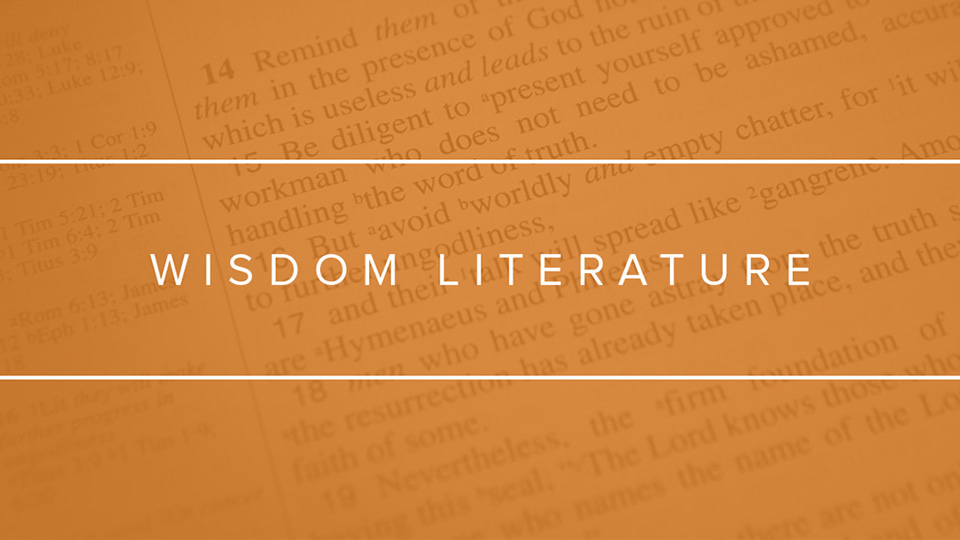Preaching Wisdom Literature
The structure of the text should be the structure of the sermon.
This axiom is easy enough to follow when preaching a New Testament Epistle where you can follow the clear paragraph structure of the text, using rhetorical clues to divide the text such as verbs and conjunctions. However, doesn’t this axiom break down when preaching the Wisdom Literature (Job, Proverbs, Ecclesiastes, Song of Solomon)? If, for example, one were to preach Proverbs 14:1-4, the first verse relates to a wise woman, the second to uprightness, the third to foolish talk, and the fourth to the value of the oxen. That’s a pretty entertaining four-point sermon, but it hardly seems to flow.
When preaching through Proverbs, one will have to decide if they want to walk chronologically, verse by verse through the book or not. This is doable through the first nine chapters, and becomes more difficult, with some notable exceptions, in chapters 10-31. Once into chapter 10, many pastors opt to gather the collective texts on a certain topic and preach one of the representative texts on that topic while mentioning the others. The title is something like, “The Proverbs on Anger,” only one text is preached, but the others are mentioned to show all that the Proverbs say on this topic. This strategy is effective as far as it goes, but remember that even in 10-31 there is some sequential flow that can be mined, especially in the juxtaposition of wisdom and folly. All this to say you are still doing exposition (removing the posit of truth and showing it to people) through the book, even though you violate the chronology.
What about the rest of the wisdom literature? Here’s a few short thoughts.
Preaching Job
When preaching Job remember that is this is narrative wrapped in conversation. So the narrative of the story could be told in a few moments, but the bulk of the text is a conversation between Job, his friends, and God. So, when preaching Job, be sure to preach the conversation in the backdrop of the narrative. Preaching through Job is essentially preaching dialogue, or a collection of selected monologues.
Preaching Ecclesiastes
Ecclesiastes also has a narrative flow to it. And so it can be preached chronologically without much problem. However, one may choose to preach it categorically as was suggested with Proverbs. If one does preach through it this way, it will be important to come up for air from time to time. The book can be negative to the point of depressing, so stop at points along the way and point to the hope that we have in Christ.
Preaching Song of Solomon
The Song of Solomon is hardly wisdom literature in the classic sense. While it has the poetic feel of wisdom literature, this book is a graphic love story expressing the struggle, joy, and intimacy of marriage. How does one tackle this difficult book? Well, really preaching this book may be easier than the rest. The book has a very consistent narrative flow to it. So one can preach the love story from beginning to end in a chronological flow. Just like with other wisdom literature, remember to honor the strophe structure. (See previous post on Preaching the Psalms)
Wisdom is seeking us.
Wisdom cries out, “To you, O men, I call …” So while we are called to pursue wisdom, we are really called to see how wisdom is pursing us. Preaching wisdom is teaching people how they are being stalked by wisdom. It’s everywhere. It’s fascinating. And, it’s worth the challenge in preaching.
This article first appeared on www.stevenwsmith.net



